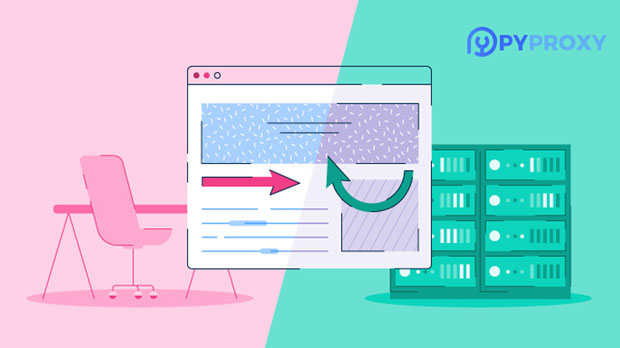The performance of free residential socks5 proxies is influenced by several critical factors that directly impact their speed, reliability, and usability. Understanding these factors is crucial for anyone looking to make the most out of such proxy services. These factors include the quality of the proxy server, network stability, geographical location, bandwidth limits, and the overall demand for free proxies. Additionally, since free proxies are often shared by multiple users, the level of congestion and the maintenance of the proxy can also play significant roles in determining performance. This article will explore these aspects in detail, providing valuable insights for users seeking to optimize their experience with free residential SOCKS5 proxies. 1. Quality of the Proxy ServerOne of the most important factors affecting the performance of free residential SOCKS5 proxies is the quality of the proxy server itself. The quality is generally determined by the hardware and software running the proxy, as well as the server's configuration. A low-quality server may experience frequent downtime, slower speeds, or unreliable connections, all of which directly impact the proxy's overall performance.For free SOCKS5 proxies, server quality can vary significantly. While some may offer high-speed connections with minimal latency, others may struggle to handle high traffic volumes or might be poorly maintained. Since free proxies are often shared by multiple users, the server's capacity to handle simultaneous connections without affecting performance is crucial.Additionally, the server's software configuration—such as load balancing, bandwidth allocation, and security features—plays a pivotal role in ensuring optimal performance. Inadequately configured servers can lead to bottlenecks, slower speeds, and even security vulnerabilities.2. Network Stability and LatencyNetwork stability and latency are key contributors to the overall performance of any proxy. Free residential SOCKS5 proxies, in particular, are more susceptible to instability due to their shared nature. Network latency, which refers to the delay between sending and receiving data, can severely affect the browsing experience, especially for real-time applications like video streaming or gaming.Higher latency is often caused by network congestion or long routing paths. For users accessing free residential proxies, the physical distance between the client and the proxy server can impact how quickly data is transmitted. Servers located far away from the user will generally introduce higher latency, making the proxy less effective.Moreover, network stability is critical in maintaining a consistent connection. Fluctuations in network performance, such as packet loss or sudden drops in connection quality, can cause disruptions during browsing or data transfer. With free proxies, network stability is often not guaranteed, and users might experience unexpected slowdowns or disconnects.3. Geographical Location of the Proxy ServerThe geographical location of the socks5 proxy server significantly influences its performance, particularly in terms of latency and speed. When users connect to a proxy server located far from their actual location, the round-trip time for data to travel between the user and the server increases, resulting in higher latency and slower speeds.Additionally, the location of the proxy server can affect the proxy's ability to bypass geographic restrictions. Free residential proxies located in certain regions may be less effective at accessing content restricted to other areas. This geographical factor is not only essential for ensuring optimal performance but also for users who require proxies to access specific content from particular countries or regions.For instance, if a user in Europe connects to a free residential socks5 proxy server located in Asia, they are likely to experience slower speeds compared to connecting to a server located in Europe. This is because the data must travel a longer distance, increasing both latency and the potential for network interruptions.4. Bandwidth and Speed LimitationsBandwidth limitations are one of the most common performance bottlenecks in free residential SOCKS5 proxies. Many free proxy services impose strict bandwidth restrictions to prevent abuse and to ensure that the server can handle a large number of users simultaneously. As a result, users may experience slower speeds or even a complete lack of access if the server's bandwidth is saturated.Since free proxies are shared resources, the available bandwidth is often divided among multiple users. This means that the more users connected to a server at any given time, the slower the speed each individual user can experience. This shared nature of free proxies can be a significant disadvantage, particularly for users who need to perform bandwidth-intensive tasks such as streaming, downloading large files, or gaming.Bandwidth limitations can also be influenced by the quality of the ISP (Internet Service Provider) that supports the proxy server. A server located on a network with lower-quality infrastructure will experience more frequent speed drops and connectivity issues, directly affecting the user experience.5. Proxy Congestion and User LoadSince free residential SOCKS5 proxies are typically shared by many users, the level of congestion and the number of users accessing the same proxy server at the same time can dramatically affect performance. When too many users are connected to a single proxy, the server can become overloaded, leading to slower speeds, longer connection times, and even service outages.Congestion occurs when the number of simultaneous connections exceeds the server's capacity to handle them effectively. This often happens during peak usage times, when more users are likely to be online, or when the proxy provider has not implemented adequate load balancing measures. The higher the number of users connected to the proxy, the more resources are consumed, leaving less available bandwidth and processing power for each user.As a result, performance can degrade rapidly under high demand, making it difficult for users to rely on free proxies for consistent service. This factor underscores the inherent limitations of free proxy services compared to paid alternatives that can provide dedicated resources and optimized performance.6. Proxy Maintenance and UpdatesThe maintenance and updates of the proxy infrastructure play a crucial role in the performance of free residential SOCKS5 proxies. Well-maintained proxies are less likely to experience crashes, bugs, or slowdowns. Regular updates ensure that the servers are equipped with the latest security patches, performance enhancements, and compatibility improvements.However, free proxy services often lack the resources to provide frequent maintenance and updates, which can lead to performance issues over time. An outdated proxy server might be vulnerable to security breaches, and it may not support the latest protocols or features that could enhance performance.Without proper maintenance, proxy servers may also become unreliable, with frequent downtimes or degraded speeds. This is particularly problematic for users who require a stable and fast connection. The lack of timely updates and optimizations is a common issue with free proxy services, making them less dependable than their paid counterparts.7. Security and Privacy ConcernsAlthough security does not directly influence the speed or performance of free residential SOCKS5 proxies, it is an important consideration. Poorly secured proxies can expose users to various risks, such as data leaks, man-in-the-middle attacks, or compromised browsing sessions. Security vulnerabilities in free proxies often lead to a decline in performance, as additional measures must be taken to maintain user privacy and protect sensitive data.Free residential proxies are more prone to being used for malicious purposes, which can lead to slower performance as the proxy server becomes overloaded with requests from various sources. Furthermore, some free proxies may monitor or log user activity, affecting both privacy and performance.ConclusionThe performance of free residential SOCKS5 proxies is influenced by a wide array of factors, ranging from the quality of the proxy server and network stability to congestion levels and server maintenance. Users should be aware of these key elements when using free proxies and understand that performance can fluctuate based on the shared nature of these services. While free residential proxies may provide a cost-effective solution for some use cases, they come with inherent limitations that can affect speed, reliability, and overall user experience.
Jan 06, 2025
![arrow]()


















































